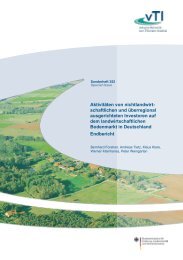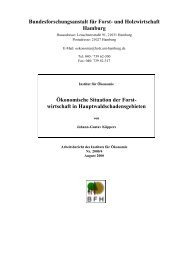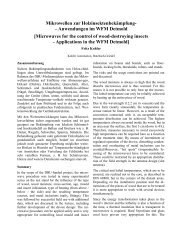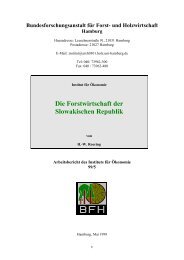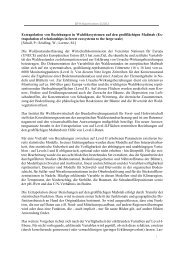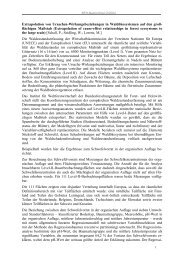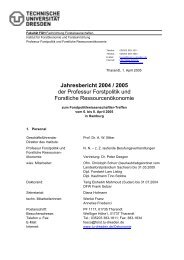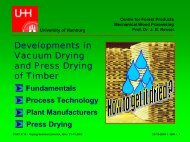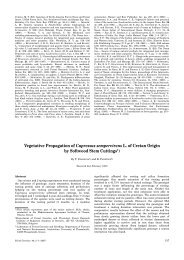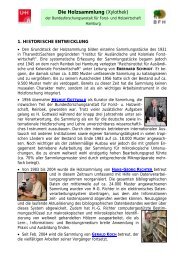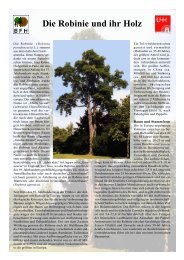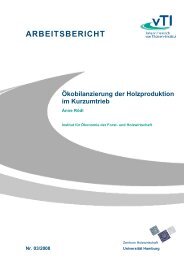STATE OF THE ART REVIEWS
STATE OF THE ART REVIEWS
STATE OF THE ART REVIEWS
Create successful ePaper yourself
Turn your PDF publications into a flip-book with our unique Google optimized e-Paper software.
COST ACTION E22: Environmental optimisation of wood protection<br />
D. Production and evaluation of the following target products: Parquet flooring, boat<br />
decking, floating boat bridges, doorframes and exterior furniture.<br />
E. Life cycle assessment studies (with subcontractor).<br />
Part B includes 1) Marine field test, 2) Pure culture testing with Postia placenta and<br />
Coriolus versicolor with wood at three levels of modification and 3) TMC testing in<br />
three soil types and three levels of modification.<br />
Part C includes bending tests (E-modulus, MOR and shear modulus), acoustic Emodulus<br />
measurements, ASE testing, linear expansion measurements (RH30->RH90),<br />
impact strength testing, hardness testing and Dynamic Mechanical Thermal Analyses<br />
(DMTA) testing.<br />
Part C is linked to the project “Chemically modified timber products with predictable<br />
engineering performance” (see below) in which mainly four methods of wood modification<br />
are evaluated: acetylation, heat treatment, melamine resin treatment and furfuryl<br />
alcohol resin treatment. In the first step of this project acetylation, melamine resin and<br />
heat treatment is used for the same wood material as part C in the Chemowood project<br />
and tested parallel to the specimens from the Chemowood project.<br />
Contact person:<br />
Dr Mats Westin<br />
E-mail: mats.westin@sikt.chalmers.se<br />
Chemically modified timber products with predictable engineering performance (CTH)<br />
The main objective of the project is to study the performance of timber products made<br />
of modified wood and with the knowledge of the performance identify suitable endproducts<br />
for each modification type. Other objectives are:<br />
• to verify that suitable levels of modification have been reached<br />
• to evaluate the possibilities to upgrade ”low-quality” wood material from for<br />
example fast-grown trees or material cut close to the pith of the tree<br />
• to study the effect of modification level upon the different mechanical properties<br />
• to propose a specific modification method (and level) for a well-defined endproduct.<br />
The project will be focussed on four modification methods:<br />
1. Acetylation - one level of modification<br />
2. Heat treatment - two levels<br />
3. Modification with furfuryl alcohol - two levels<br />
4. Treatment with melamine resin - two levels<br />
168



